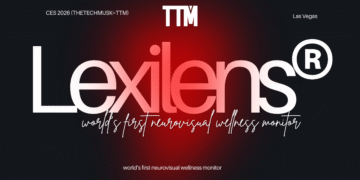When I first heard about ASI Cloud, the term “permissionless GPU cloud for AI” immediately caught my attention. In an AI landscape dominated by a few hyperscalers, the idea of giving developers and Web3 builders an open, wallet-based path to scale inference — now that’s compelling.
On 23 September 2025, the Artificial Superintelligence Alliance (ASI) officially launches ASI Cloud (Beta), positioning it as a permissionless GPU cloud and AI services platform targeted at developers, enterprises, and Web3 innovators. Backed by alliance members CUDOS and SingularityNET, this marks a serious push to disrupt the centralized cloud + AI paradigm.
Opening the Gates to AI (without the gatekeepers)
The core promise is bold: let anyone — not just big companies — run state-of-the-art large language models (LLMs) at scale, with transparent costs, crypto billing, and minimal bureaucracy.
At launch, ASI Cloud offers LLM Inference-as-a-Service. What’s nifty: they expose an OpenAI-compatible, pay-per-token API — meaning developers familiar with OpenAI tooling can hit the ground running. The model roster is strong, too: Gemma-3-27B-IT, Llama-3.3-70B, Qwen-3-32B, and their internally developed ASI:1-mini.
Under the hood, the infrastructure is powered by enterprise-grade NVIDIA hardware, backed by over 20 years of data center know-how. CUDOS operates a globally distributed GPU network (13 regions), while SingularityNET handles the inference backbone and model catalog.
The alliance clearly wants to blur the line between Web2 and Web3 — with crypto-first billing (supporting ASI tokens, FET, USDC), though fiat options are on the roadmap. The pricing is also refreshingly transparent: $0.07 per million input tokens, $0.16 per million output tokens.
“Centralised clouds have made AI expensive, opaque, and fiat-only. With ASI Cloud, we are removing those barriers.”
— Luke Gwinecki, Head of Product, CUDOS
What this means (and where the battles lie)
From where I sit, ASI Cloud punches at several incumbents: the big AI-cloud stack providers, specialized inference startups, and even GPU marketplaces. Its differentiators:
- Permissionless access: you don’t need to get whitelisted or wait weeks for access.
- Open pricing & tokenization: if they deliver on this, it dodges the “surprise invoice” hazard.
- Seamless developer experience: OpenAI API compatibility is a smart move to attract adoption fast.
- Web3 synergy: wallet-based usage and crypto billing suite the ethos of decentralization — but might limit mainstream appeal initially.
However, there are challenges ahead:
- Reliability & SLAs: For enterprises, uptime, latency, and support will be key. The hype is great; execution is harder.
- Model ecosystem & updates: Keeping the model catalog fresh and performant matters, especially as newer LLM architectures emerge.
- Token volatility and usability: Crypto billing is elegant in theory, but price swings and token liquidity could complicate adoption for many users.
- Competition: Others are pushing inference as a service (e.g. Replicate, RunPod, Hugging Face). ASI’s unique angle is decentralization, but they’ll need to prove an advantage in cost or performance.
What’s next (and what I’ll be watching)
ASI Alliance sees this as a foundation; future features include fine-tuning, encrypted/multi-party workloads, and multimodal AI. As a tech journalist, I’ll be tracking:
- Beta user feedback: How real workloads perform, and whether latency or price surprises emerge.
- Adoption from Web3 & AI startups: Will this attract bleeding-edge projects that want full control over inference?
- Token & billing stability: Whether users gravitate toward fiat or crypto billing in practice.
- Partnerships and integrations: Especially with AI frameworks, SDKs, and ecosystem players.
If ASI Cloud can deliver on its promise of transparent, open, scalable AI infrastructure — and do so with reliability — it may become a foundational platform in the open AI era. But the path is steep, and the incumbents won’t yield ground easily.























